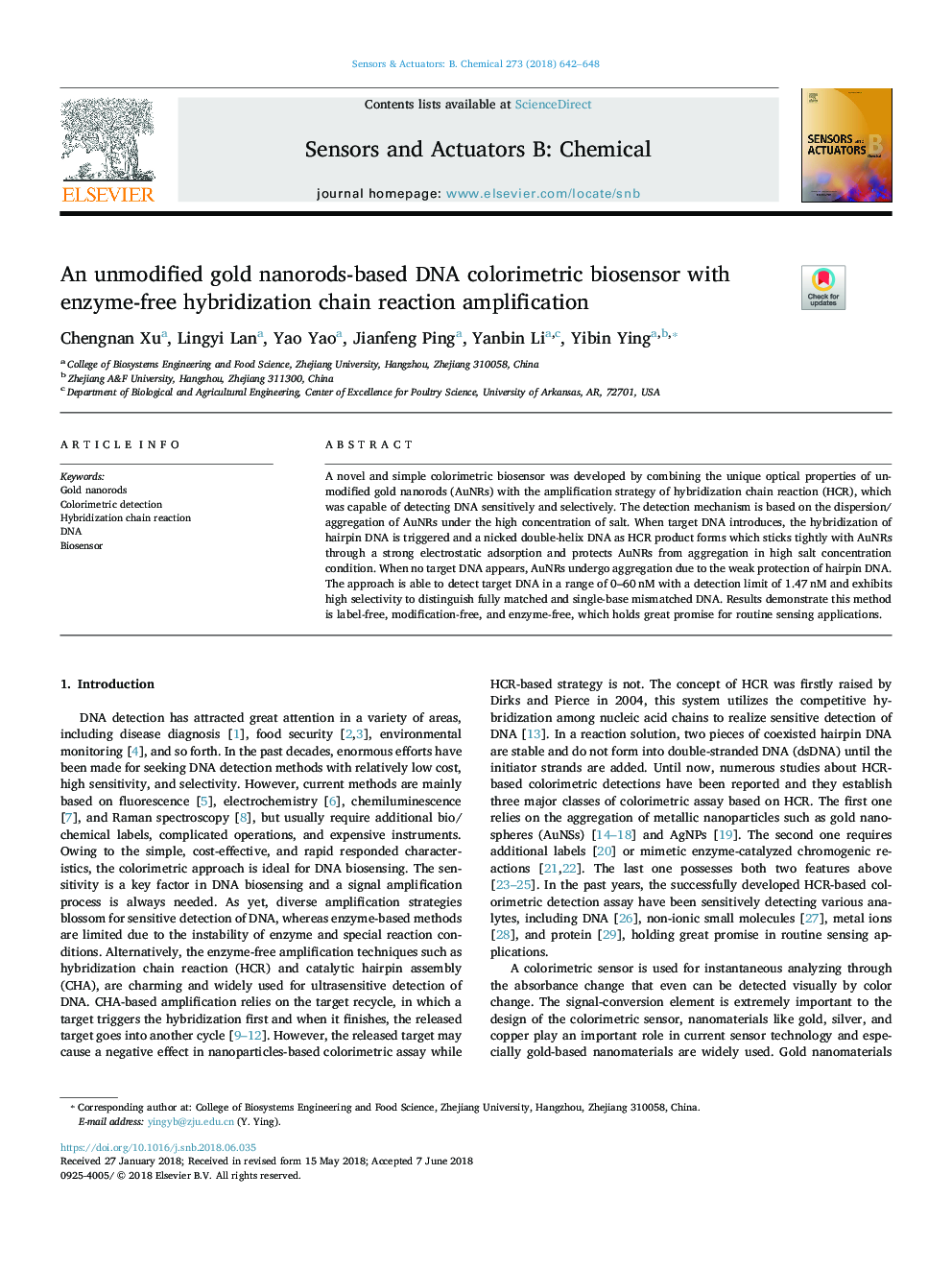| Article ID | Journal | Published Year | Pages | File Type |
|---|---|---|---|---|
| 7138858 | Sensors and Actuators B: Chemical | 2018 | 7 Pages |
Abstract
A novel and simple colorimetric biosensor was developed by combining the unique optical properties of unmodified gold nanorods (AuNRs) with the amplification strategy of hybridization chain reaction (HCR), which was capable of detecting DNA sensitively and selectively. The detection mechanism is based on the dispersion/aggregation of AuNRs under the high concentration of salt. When target DNA introduces, the hybridization of hairpin DNA is triggered and a nicked double-helix DNA as HCR product forms which sticks tightly with AuNRs through a strong electrostatic adsorption and protects AuNRs from aggregation in high salt concentration condition. When no target DNA appears, AuNRs undergo aggregation due to the weak protection of hairpin DNA. The approach is able to detect target DNA in a range of 0-60â¯nM with a detection limit of 1.47â¯nM and exhibits high selectivity to distinguish fully matched and single-base mismatched DNA. Results demonstrate this method is label-free, modification-free, and enzyme-free, which holds great promise for routine sensing applications.
Related Topics
Physical Sciences and Engineering
Chemistry
Analytical Chemistry
Authors
Chengnan Xu, Lingyi Lan, Yao Yao, Jianfeng Ping, Yanbin Li, Yibin Ying,
